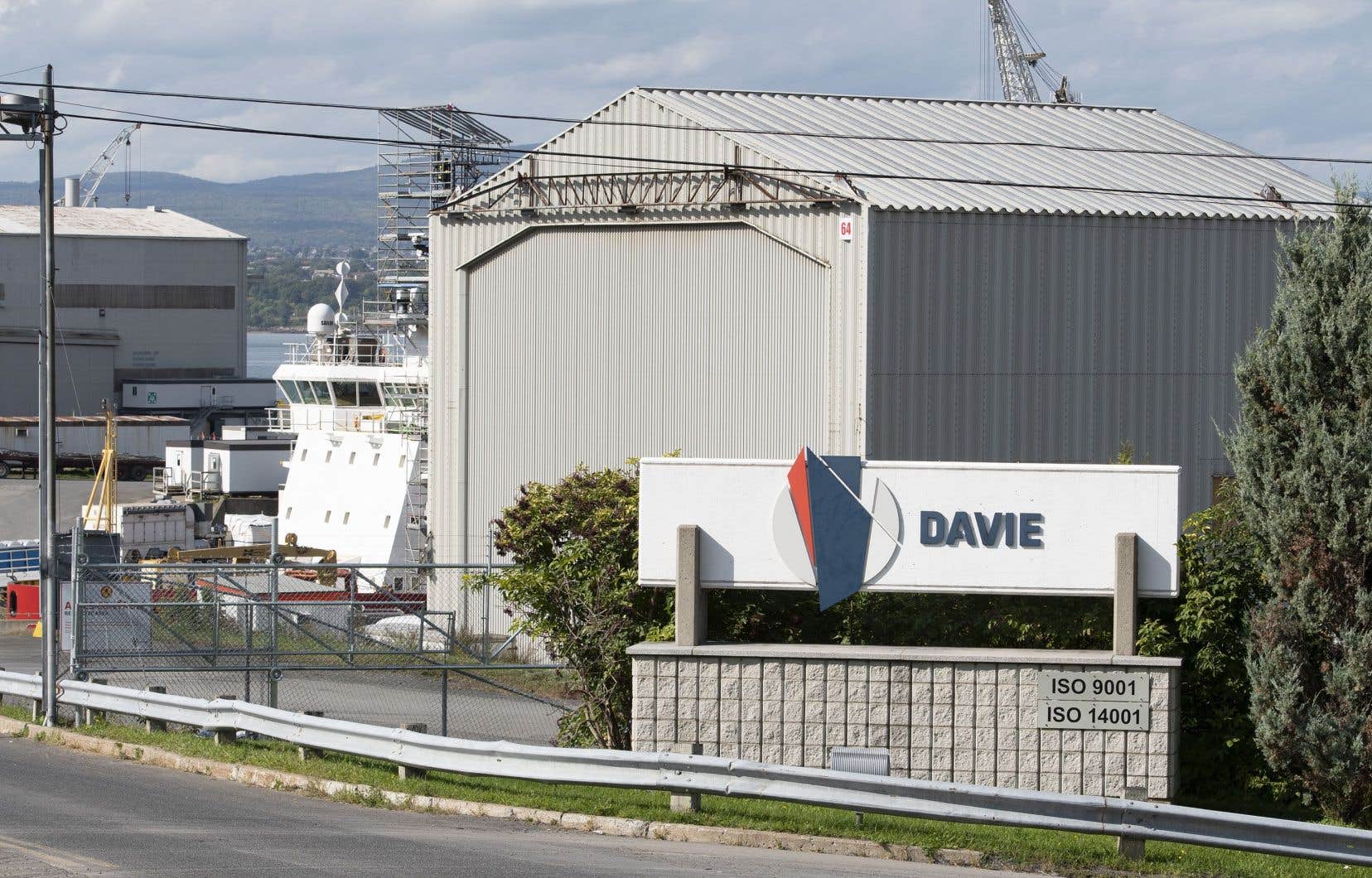After more than a decade of waiting, Quebec is now entitled to its share of the federal windfall in terms of maritime construction. The Davie shipyard in Lévis, renowned for the ups and downs that have marked its almost bicentennial history in recent memory, officially becomes the third partner in Canada’s naval strategy.
“La Davie becomes, today, the third supplier partner of the Canadian naval strategy,” chanted Prime Minister Justin Trudeau to thunderous applause from the workers gathered for this long-awaited announcement.
The entry of the Lévis shipyard guarantees him several billion dollars in federal contracts for the construction of seven icebreakers, including a polar one, and two ferries. According to Prime Minister François Legault, negotiations are still underway, but Ottawa has made a commitment to provide 8.5 billion contracts to the Quebec shipyard, the largest in the country. The Davie shipyard, which currently has a few hundred workers, should add 1,800 to build the icebreakers ordered by the federal government.
The integration of the Davie into the maritime strategy is accompanied by a major modernization, costing 840 million dollars, to which the Government of Quebec is committed to contributing up to 520 million.
“We are in the process of guaranteeing that we will still have three, four, five generations of workers at the Davie shipyard,” Prime Minister Trudeau insisted in his speech. “Wow! continued François Legault in his turn of words. It’s a beautiful day: I’ll take it every day, Justin. »
The growth of the Davie shipyard “will bring spin-offs throughout Quebec,” rejoiced the Quebec Premier. According to the Association of Suppliers of Chantier Davie Canada, some 1,500 companies, 1,000 of which are in Quebec, will also benefit from federal contracts.
“It’s going to be fine”
The formalization of the entry of the Davie into the Canadian naval strategy took place in a huge hangar used to cut the steel plates intended for the assembly of the hulls. The place has been “discarded” for years. “It’s slowed down from the ferries and theAsterix » delivered in 2017, explains Marc Cloutier, who is celebrating his fifteenth year at the yard.
Among the workers of the Davie, the horizon finally seemed to emerge after years of gloom.
“I’m especially happy for the young people”, explains Dragutin Mazic, painter since 1991 on the site. A Croatian immigrant who arrived in Quebec in 1986, he wears a worker’s helmet, dented by years of work and displaying a raised fist in memory of past union struggles, like the ups and downs that marked his career here.
Mr. Mazic has experienced the successive waves of dismissals and repeated bankruptcies that have dotted the recent history of the site inaugurated in 1825. “I am retiring in a year, explained the 68-year-old man. Young people, on the other hand, it gives them work for more than 20 years. It is justice, for us, because we had seen the Halifax and Vancouver shipyards obtain contracts that escaped us. »
The Irving shipyards on the east coast and Seaspan on the western tip of Canada have been part of the federal naval strategy for 12 years now. Stephen Harper’s Conservative government, however, shunned the Davie shipyard when implementing the plan to modernize the Canadian fleet and continued to do so until the end of its reign.
A painter since 1991, too, at the Lévis shipyard, Mario Gingras also lived through the time when his work depended on the arrival of contracts in dribs and drabs. “I knew the time when we were 3000 workers here, he told the Duty. I also lived through the time when we hit our noses in the wall, when the layoffs saw 400 colleagues leave at once. »
At his side, his 19-year-old daughter, Megan, newly hired at the site, was delighted with an announcement which guarantees him to be able to spend his entire career in the same place. “His future is assured here,” said his father.
It will however be necessary to wait three years before the repercussions of the maritime strategy are felt at Davie. “We had a briefing, it is from 2026 that we will see the effects”.
Dragutin Mazic’s helmet sported one final sticker, applied more recently: a rainbow with the words “It’s going to be fine” above it.
Stuck during the pandemic, it takes on its full meaning today for him and his colleagues at Davie, he explains, pointing to the small symbol.
